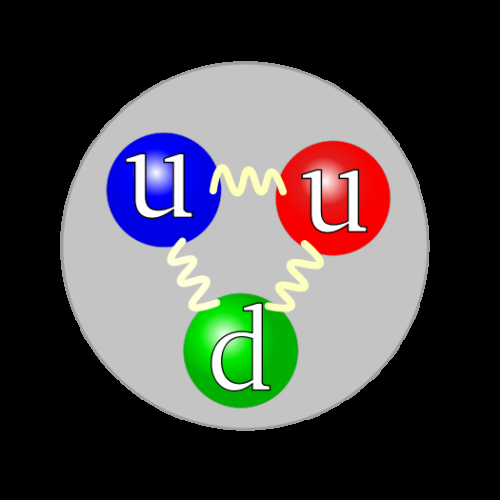August 12, 2016 report
New measurement with deuterium nucleus confirms proton radius puzzle is real

A large team made up of researchers from across the globe has repeated experiments conducted several years ago that showed a different radius for a proton when it was orbited by a muon as opposed to an electron—a finding dubbed the proton radius puzzle—using a deuterium nucleus this time and has found the same puzzle. In their paper published in the journal Science, the team describes the experiments they conducted, what they found and offer a few possible ideas to help dispel the notion that the puzzle indicates that there may be some problems with the Standard Model.
Scientists have been able to calculate the radius of a proton (0.88 ± 0.01 femtometers) for some time using the charge of the electron that orbits around it and doing so has helped confirm theories regarding the Standard Model. But, in trying to improve the accuracy of the measurement by using a (which orbits closer to the proton), researchers at the Max Planck Institute back in 2010 found a different radius—one that was 7 deviations from what was considered the official value. This proton radius puzzle has had physicists scratching their heads ever since because it suggests there is an error in the Standard Model somewhere. Over the past six years various researchers have offered theories to solve the puzzle, most of which have involved ways to preserve the Standard Model, but to date, the puzzle still remains.
In this latest effort the researchers sought to gain more insight into the problem by adding another piece to the puzzle, a neutron, i.e. by using a deuterium nucleus. Their thinking was that the presence of the neutron would change the way that electrons and muons perceived the proton charge. They report that they found that the measurement they made of the radius of the proton was still different from that found with just an electron and proton, by approximately 7.5 sigma.
The results by the team offer no new explanations for the measurement discrepancies—it remains a puzzle, but they do offer some possible avenues for further investigation, e.g. ways to improve measurements and forcing muons to interact with the protons to see if there might be any evidence of an unknown force at work.
More information: R. Pohl et al, Laser spectroscopy of muonic deuterium, Science (2016).
Abstract
The deuteron is the simplest compound nucleus, composed of one proton and one neutron. Deuteron properties such as the root-mean-square charge radius rd and the polarizability serve as important benchmarks for understanding the nuclear forces and structure. Muonic deuterium μd is the exotic atom formed by a deuteron and a negative muon μ–. We measured three 2S-2P transitions in μd and obtain rd = 2.12562(78) fm, which is 2.7 times more accurate but 7.5σ smaller than the CODATA-2010 value rd = 2.1424(21) fm. The μd value is also 3.5σ smaller than the rd value from electronic deuterium spectroscopy. The smaller rd, when combined with the electronic isotope shift, yields a "small" proton radius rp, similar to the one from muonic hydrogen, amplifying the proton radius puzzle.
Journal information: Science
© 2016 Â鶹ÒùÔº



















